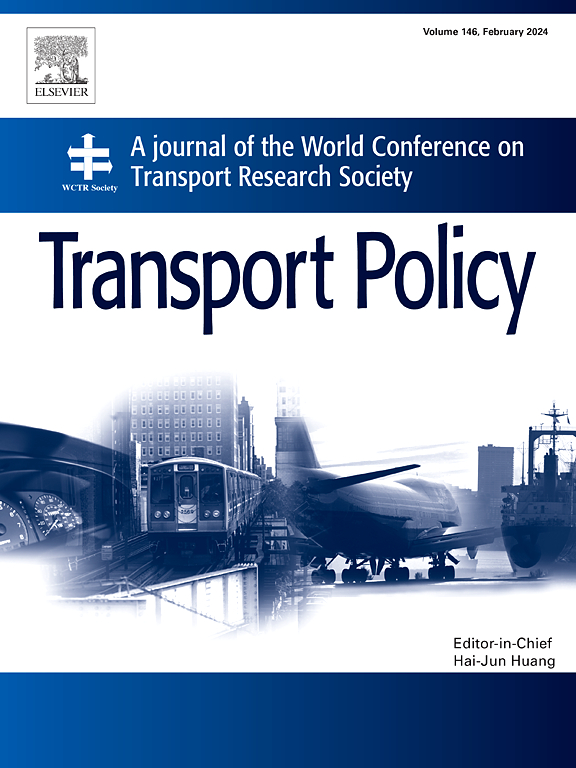重新审视多机场系统的竞争与互补:航线与航班分析
IF 6.3
2区 工程技术
Q1 ECONOMICS
引用次数: 0
摘要
研究对大都市地区的机场竞争问题作出了贡献;然而,大多数调查都集中在乘客的机场选择上。本研究提出了一个更系统的框架和测量方法,有助于理解多个机场系统的竞争和互补性(MASs)。在此背景下,我们的研究从航线和航班的角度重新审视MASs。这两种方法结合在一起。首先,定量分析了同一MAS所属机场之间的航线重叠程度,从强互补性到强竞争程度。在第二步中,定性分析侧重于五个城市(首尔、布鲁塞尔、上海、迈阿密和蒙特利尔)的监管和政策背景。这有助于确定机场之间的合作或竞争程度。来自全球37个双机场MASs的经验证据表明,在提供超过40%座位的航线上,机场间匹配发生在不到20%的航线上。定性分析证实了一系列背景,从真正的合作到强制监管,再到事实上的互补和正面竞争。我们的发现拓宽了对全球MAS竞争和互补性概况及其原因的理解。本文章由计算机程序翻译,如有差异,请以英文原文为准。
Revisiting competition and complementarity in multiple airport systems: An analysis of air routes and flights
Studies have contributed to airport competition issues in metropolitan areas; however, most have focused on passengers’ airport choices. Proposing a more systematic framework as well as a measuring method, this study contributes to the understanding of competition and complementarity in multiple airport systems (MASs). In this context, our research revisits MASs from the perspective of air routes and flights. These two approaches were combined. First, a quantitative analysis was conducted to investigate the degree of route overlap between airports belonging to the same MAS, ranging from strong complementarity to strong competition. In the second step, a qualitative analysis focused on the regulatory and policy context in which five MASs (Seoul, Brussels, Shanghai, Miami, and Montreal) were developed. This helps determine how much airports cooperate or compete with each other. Empirical evidence from 37 two-airport MASs worldwide suggests that inter-airport matches occur on less than 20% of routes that offer more than 40% of seats. Qualitative analysis confirmed a range of contexts, from genuine cooperation to forced regulation to de facto complementarity and head-on competition. Our findings broaden the understanding of MAS competition and complementarity profiles worldwide and their reasons.
求助全文
通过发布文献求助,成功后即可免费获取论文全文。
去求助
来源期刊

Transport Policy
Multiple-
CiteScore
12.10
自引率
10.30%
发文量
282
期刊介绍:
Transport Policy is an international journal aimed at bridging the gap between theory and practice in transport. Its subject areas reflect the concerns of policymakers in government, industry, voluntary organisations and the public at large, providing independent, original and rigorous analysis to understand how policy decisions have been taken, monitor their effects, and suggest how they may be improved. The journal treats the transport sector comprehensively, and in the context of other sectors including energy, housing, industry and planning. All modes are covered: land, sea and air; road and rail; public and private; motorised and non-motorised; passenger and freight.
 求助内容:
求助内容: 应助结果提醒方式:
应助结果提醒方式:


